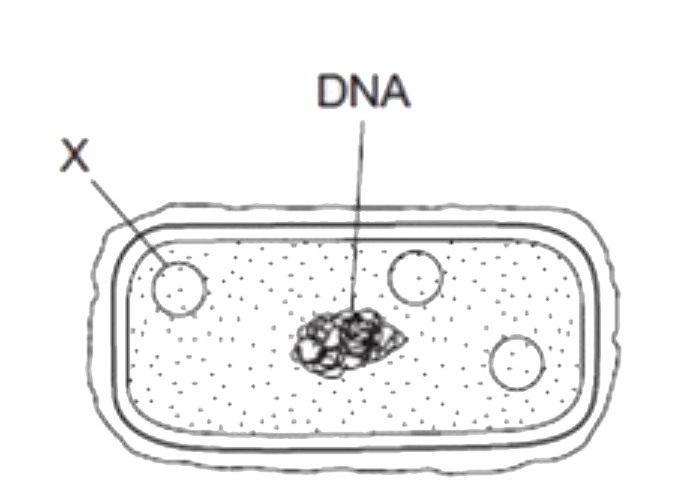Surface appendages or hairy structures present in some bacteria for attaching to one another are
Pili
Flagella
Cilia
Mesosome.
The correct Answer is:A
To answer the question "Surface appendages or hairy structures present in some bacteria for attaching to one another are," we will analyze the provided options step by step.
1. Understanding the Question: The question is asking for a specific type of structure found on the surface of some bacteria that aids in their attachment to one another.
2. Analyzing the Options:
- Option 1: Pili: These are surface appendages that are hair-like structures found on the surface of some bacteria. Their primary function is to facilitate attachment between bacterial cells.
- Option 2: Flagella: These are whip-like structures that help in the movement of bacteria. They are not primarily for attachment.
- Option 3: Cilia: These are hair-like projections found on eukaryotic cells, not bacteria. They also assist in movement rather than attachment.
- Option 4: Mesosome: These are invaginations of the plasma membrane in some bacteria, but they do not serve the purpose of attachment between cells.
3. Identifying the Correct Option: Based on the analysis, the correct answer is Option 1: Pili. Pili are indeed the surface appendages that help bacteria attach to one another.
4. Conclusion: Therefore, the surface appendages or hairy structures present in some bacteria for attaching to one another are called Pili.
- Option 1: Pili: These are surface appendages that are hair-like structures found on the surface of some bacteria. Their primary function is to facilitate attachment between bacterial cells.
- Option 2: Flagella: These are whip-like structures that help in the movement of bacteria. They are not primarily for attachment.
- Option 3: Cilia: These are hair-like projections found on eukaryotic cells, not bacteria. They also assist in movement rather than attachment.
- Option 4: Mesosome: These are invaginations of the plasma membrane in some bacteria, but they do not serve the purpose of attachment between cells.
Topper's Solved these Questions
- KINGDOM MONERA (THE PROKARYOTES)BOOK - DINESH PUBLICATION ENGLISHCHAPTER - KINGDOM MONERA (THE PROKARYOTES)EXERCISE - REVISION QUESTIONS FROM CPMPETITIVE EXAMS.
500 Videos
- KINGDOM MONERA (THE PROKARYOTES)BOOK - DINESH PUBLICATION ENGLISHCHAPTER - KINGDOM MONERA (THE PROKARYOTES)EXERCISE - CHECK YOUR GRASP
20 Videos
- KINGDOM FUNGI-MULTICELLULAR DECOMPOSERSBOOK - DINESH PUBLICATION ENGLISHCHAPTER - KINGDOM FUNGI-MULTICELLULAR DECOMPOSERSEXERCISE - CYG
19 Videos
- KINGDOM PLANTAE OR METAPHYTA BOOK - DINESH PUBLICATION ENGLISHCHAPTER - KINGDOM PLANTAE OR METAPHYTA EXERCISE - CYG
20 Videos
Similar Questions
Knowledge Check
Surface appendages used by bacteria to attach to one another and to host organisms are called :
AthylakoidsBmesosomesCpiliDspirillaAssertion:The inner ear contains three ossicles (malleus, incus and stapes) which are attached to one another in a chain-like fashion.
Reason:The stapes is attached to the tympanic membrane and the malleus is attached to the oval window of the cochlea.AIf both assertion and reason are true and reason is the correct explanation of assertion.BIf both assertion and reason are true but reason is not the correct explanation of assertion.CIf assertion is true but reason is false.DIf both assertion and reason are false.
Name one structure present only in animal cells.
View SolutionThe diagram shows the structure of a bacterial cell.

The presence of structure C in the bacterial cell is one reason why bacteria are used in genetic engineering . In the cloning vector pBR322, which gene is responsible for the replication of structure X ?
View SolutionThin, elongated, tubular structures on the surface of bacteria that help them to attach to other bacteria and solid surfaces.
View SolutionAssertion . Pili are tubular structures present in bacteria which help in conjugation
Reason. Formation of pili is controlled by F+ or fertility factor.
View SolutionAssertion . Pili are tubular structures present in bacteria which help in conjugation
Reason. Formation of pili is controlled by F+ or fertility factor.
View SolutionWhich one of the following structure is present in all adult vertebrates?
View Solution
